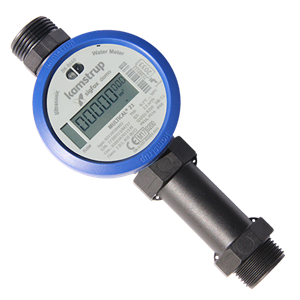There is more to smart water metering than accurate billing, but the business case for investing in smart meters and automatic meter reading is often complex. By breaking the business case down into smaller parts and singling out the areas with the most potential, utilities can make a more accurate and relevant calculation of the benefits that more frequent data can deliver.
Over the course of the last decade, the water industry has undergone rapid and extensive development. Its transformation has significantly increased the complexity of the everyday work for utility professionals but has also brought with it an array of opportunities. These new conditions represent an enormous potential for those water utilities that have the tools to realise it.
Breaking down the business case
There is a general consensus that (more frequent) meter data is a big part of the solution to many of the industry’s challenges because it can provide transparency–both in the utility’s operations and in the distribution network all the way to the consumer. However, data only becomes valuable when you use it, so how do you calculate the value it can bring to justify the investment?
While some of the advantages to automated meter reading are more evident than others, the overall business case can seem difficult to decode. Breaking it down into smaller, more tangible parts allows you to look closer at the individual elements rather than picking only the low hanging fruits, like saying goodbye to manual reading and meter reading cards. This not only makes the business case more accurate but also more relevant for your utility and the challenges you face.
Prioritise and quantify
The first step is to consider your challenges and the areas where frequent meter data can make a difference for your utility. Is leak detection your main concern or are you more focused on reducing the number of field visits you conduct? Maybe your primary goal is simple and efficient meter reading with a minimum of administration.
Step two is to assess the value each area represents for you by breaking it down further into the components of which it is made up. In this way, you are able to calculate and quantify the financial potential of automatic meter reading in that individual area. Because how much does a field visit actually cost? How much water do you lose due to leakages? And how would it affect the lifetime of your distribution network if you knew the ideal pressure out there? Adding up the answers to those questions visualises how much your utility would gain from simpler meter reading and more frequent data. In other words: what is your data actually worth to you?
A better basis for decision-making
The technological development and digitalisation of the water industry shows no sign of slowing down, but the right tools can help water utilities decrease the complexity of their daily work and transform their meter data into valuable knowledge.
However, not until you have deciphered the individual components that make up your business case for automated meter reading, will you know the actual difference that working more proactively with data will mean for your utility today as well as in the future.
—————————————————————————————–
Let your numbers do the talking
Kamstrup has developed an online tool that makes it easier for you to break down your business case for automated meter reading. By choosing the focus area(s) for your utility and applying facts and numbers from your everyday work, you get an idea of the potential value for your utility.
Dive in at kamstrup.com/Lets-talk-about









